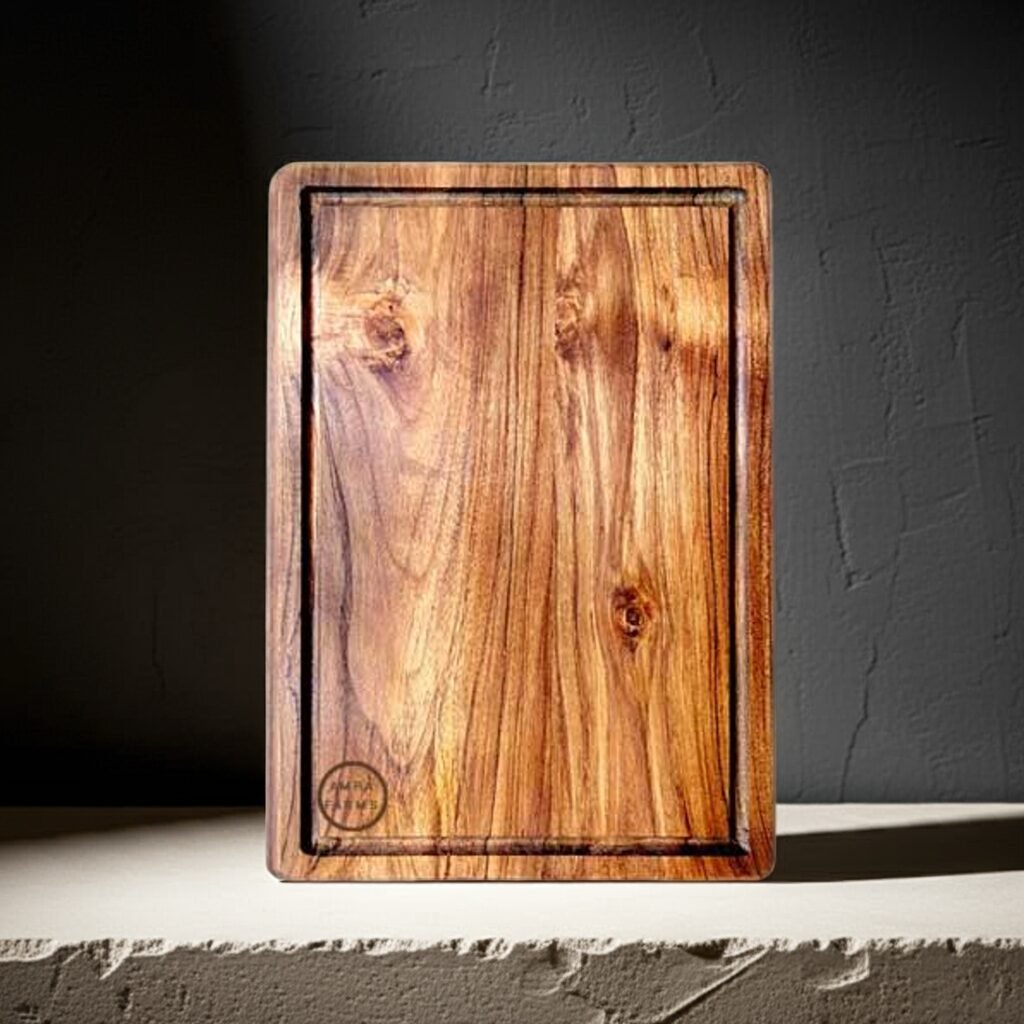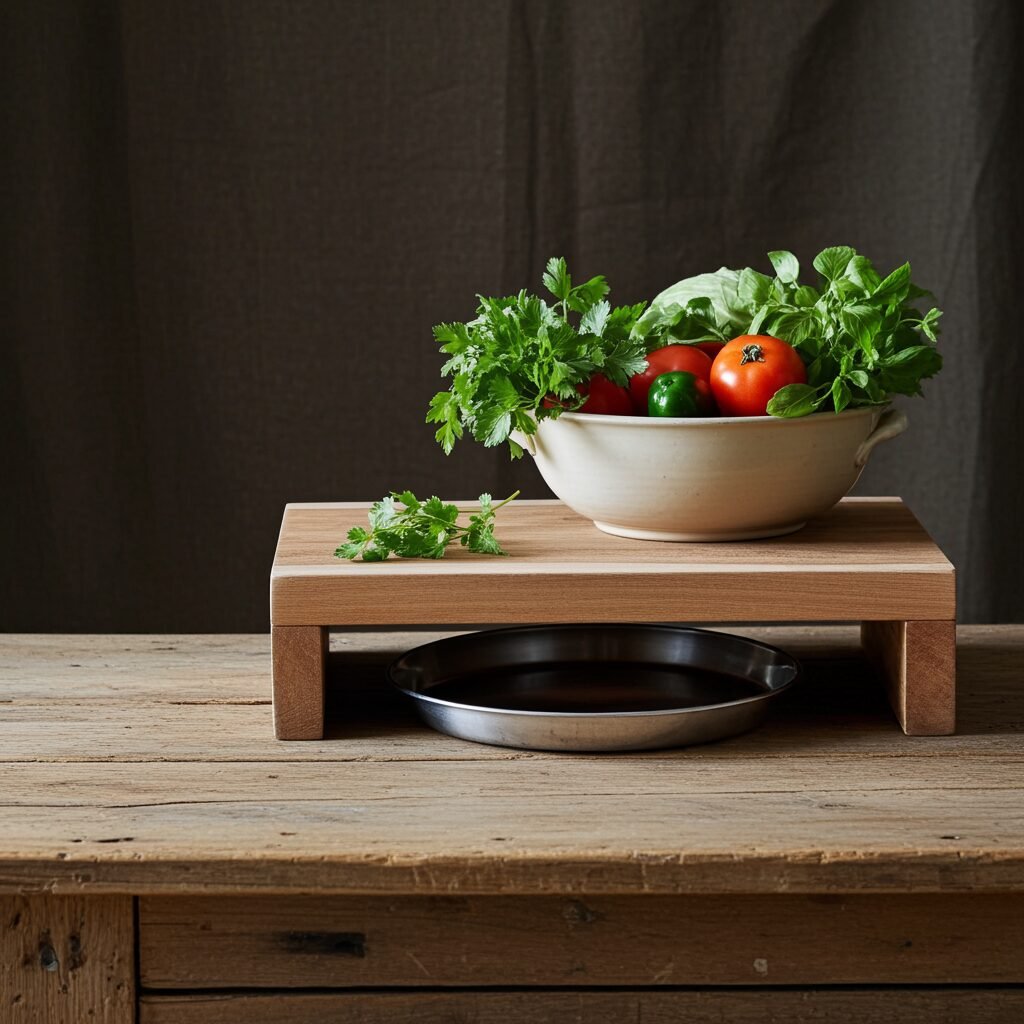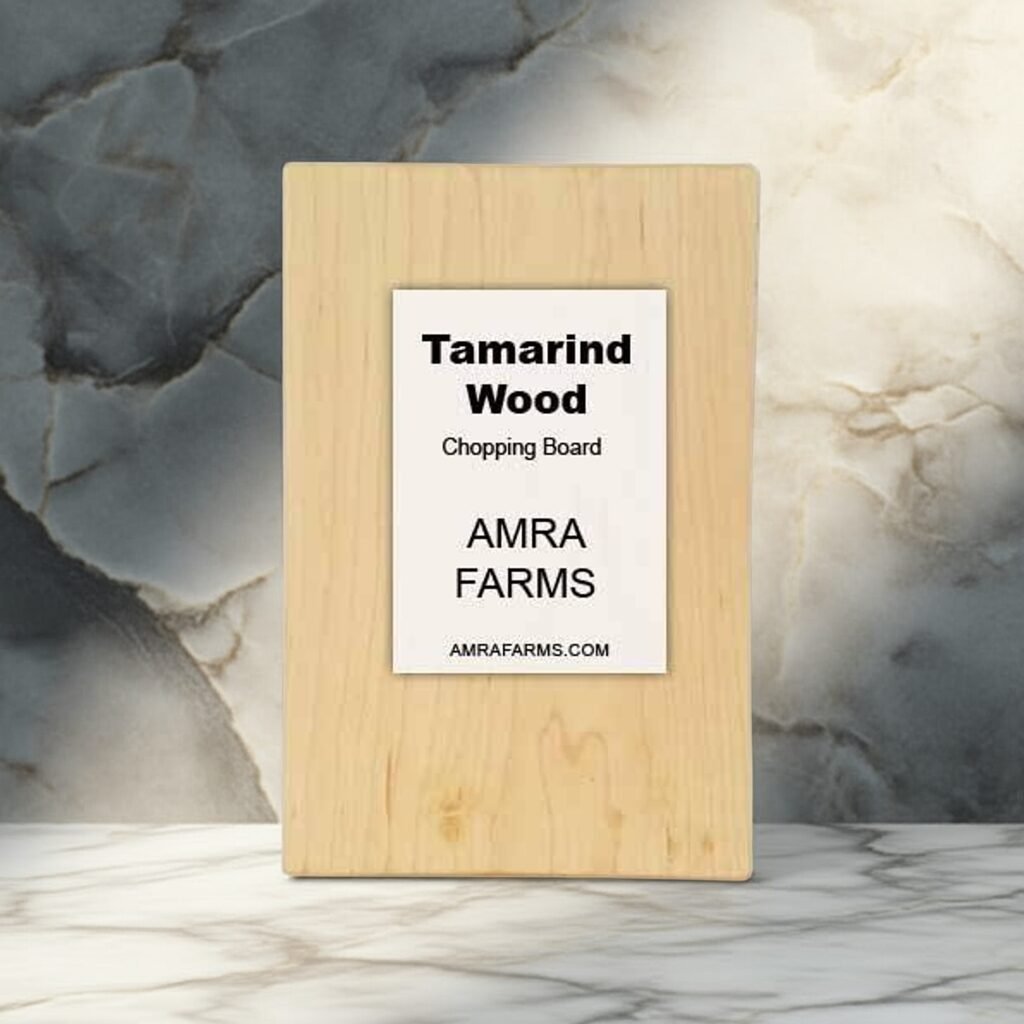Your cart is currently empty!
Benefits of Using a Teak Wood Chopping Board
Why Teak Wood Chopping Boards Deserve a Spot in Your Kitchen
For years, wooden cutting boards were a regular household and kitchen accessory. With the introduction of plastic boards in the market, wooden cutting boards took a back seat. Today, wooden cutting boards are considered a premium chopping boards while plastic cutting boards are considered cheap. Teak wood cutting boards, especially, have a special place in people’s kitchen. They are not just cutting boards but a work of art. If you are a seasoned cook or a chef, you would already know and understand the value of a teak wood chopping board and why it is so special. A teak wood chopping board transforms your kitchen experience for the better and gives a touch of elegance to your kitchen.






Durability that Lasts for Years
One of the most important and the common reason behind the purchase of a teak wood cutting board is its durability. Teak is a hardwood. They are known for their dense grains and natural oil content. Historically, they were used for shipbuilding in the navies and was a prized commodity in the shipbuilding industry. Due to their natural resistance to water and pests, they were considered as one of the best woods for constructions, especially in warm and humid climates. Building furniture for both outdoor and indoor has had a good demand for teak wood too. The railways used it for building sleepers in the colonial era. Teak wood was a preferred wood for almost all tasks for its durability and also because it was easy to work with.
Teak is also one of the few woods which require minimum maintenance. A good varnish on teak would keep the wood in good shape for 5–10 years. Resurfacing and repolishing would render the wood as good as new. They are scratch-resistant and that’s a great reason why it’s preferred for cutting boards. Even with repeated exposure to water, they do not warp or crack like other woods. If you are tired of replacing your cutting boards every few months, you should consider a teak wood chopping board.
Naturally Anti-Bacterial
One of the key features of teak wood is its natural oil content. They are rich in quinones and tannins. The anthraquinones provide resistance to xylophagous organisms. Lignin content in teak wood provides resistance to thermal resistance and reactivity. This makes teak wood resistant to pests. The texture of a good teak wood is naturally oily. With age and regular use, teak wood tends to dry up. Oiling once a week will retain the lustre of the wood. Since the wood is naturally scratch-resistant, they prevent bacteria to accumulate. Teak wood’s non-porous wood surface prevents bacteria from being accumulated too. So this makes teak wood one of the most preferred wood material for chopping boards, especially for meat. Cutting juicy vegetables like tomatoes and fruits makes it safe on a teak wood cutting board too. The antibacterial strength and its evidence of the same support its hygienic benefits by home cooks and chefs worldwide. Many users find teak wood requires less aggressive sanitising unlike plastic or other wooden chopping boards. If you prioritise hygiene in your kitchen, a teak wood chopping board is antibacterial and the best antibacterial chopping board you will find.
Easy to Maintain
Teak wood’s properties make it very easy to maintain. Since the wood has high oil content, it is moisture resistant. The tight grains ensure that the wood is non-porous and maintains its shape. Teak wood requires minimal to no maintenance in most cases, especially in furniture. When it comes to chopping boards, they go through regular wet and dry phases. Most wood cannot tolerate these procedures but teak wood is highly resilient. Teak wood does require maintenance but the maintenance is relatively low. Also, teak wood is perfect for areas where moisture content is high. This includes areas where there is high rainfall and coastal areas. They are resistant to mould and fungus. Maintenance of teak wood is simple. Clean the board immediately after use. Wipe dry after wash with a dry towel and oil the board once a month. Unlike other wooden boards, which require at least weekly maintenance, teak board requires very less.
Just ensure that the board is not soaked. Wooden boards are not dishwasher safe and teak wood boards are only meant for hand wash. Use mild soap with warm water to wash off your board. Sanitising if necessary should be performed with baking soda and vinegar or a salt lemon scrub. Always oil your board immediately after sanitising your board.
Environmentally Conscious Choice
People prefer wooden chopping boards for various reasons. One of the reasons includes sustainability and eco-friendliness of a wooden chopping board. Plastic boards are not preferred due to a lot of reasons and the cons outweigh the pros. One of the reasons plastic is not a preferred material is the amount of waste it produces and at the end, it occupies more space in the landfill. Health issues of using plastic aside, the environmental harm it creates are high too. Choosing a wooden cutting board may seem like cutting down a tree and no different from using plastic or even worse. The truth is that most of these wood come from ethical sources. Every tree that is cut is replanted. Farms require an income and they will never cut down something without replacing them. Teak wood comes from plantations in most cases. When one tree is cut another is replaced. Often there are more than 4 replacing a single tree and they are cut over the course of time when they are too crowded making way for one tree in 100 square feet. Large trees are often cut after 40, 50 or even 100 years depending on farms.
So don’t worry. Teak wood boards are eco-friendly and a sustainable and renewable resource. It leaves minimum carbon footprint compared to plastic and synthetic materials.
Elegant Aesthetics for Your Kitchen
Anyone with love for wood would have a special love for teak. The golden yellow colours and the distinctive grain patterns make teak wood a natural beauty in any kitchen. Unlike synthetic boards which are bland and utilitarian, teak wood boards are a stylish kitchen accessory, used for not just cutting but also serving and for decorative purposes. A teak wood cutting board, charcuterie board or a serving board elevates the overall experience. Their smooth finish and touch of sophistication add to your table settings.
Conclusion
Teak wood cutting boards are not just a functional accessory which adds to your convenience. It is an investment in a durable, hygienic, stylish, and environmentally responsible kitchen accessory. Teak wood chopping boards tick all the boxes with its unmatched hardwood durability, natural antibacterial properties and elegant appearance. Choose a teak wood cutting board to elevate and upgrade your kitchen. It’s a long-lasting kitchen cutting board which offers performance and a touch of elegance to your kitchen space.
Categories
Products
- Buy Wooden Vegetable Cutting Boards Online
- Wooden Kitchen Accessories Tools
- Buy Butcher Block & Meat Cutting Boards Online
- Buy Premium Edge Grain Single Block Wooden Chopping Boards Online
- Buy The Best Teak Wood Chopping Boards Online In India
- Buy Wooden Cutting Boards With Handle For Kitchen
- Mango Wood Chopping Boards
- Single Block Chopping Boards
- Tamarind Wood Chopping Boards
- Wooden Platter Boards , Pizza Platters & Charcuterie Boards
Tamarind Wood Cutting Board Teak Wood Cutting board
